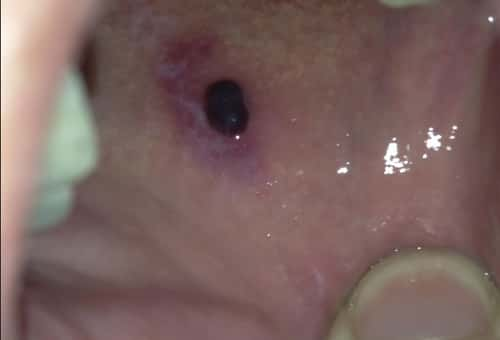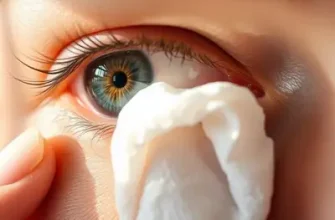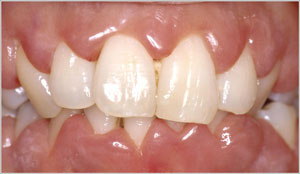If you’ve ever run your tongue along the inside of your cheek and felt a small bump, you know the sudden concern it can trigger. These bumps can be caused by a variety of conditions, and their appearance may vary.
What Bump on the Inside of a Cheek Looks and Feels Like
Typically, a cheek bump might look like a puffy, small blister or lump, sometimes red or white, and can feel tender, swollen, or slightly irritating. If you press down on it, there’s often some give, suggesting fluid buildup underneath.
These cheek bumps might appear out of nowhere, causing a bit of alarm, but most are harmless and can be treated. Identifying the cause of the bump is the first step in understanding how to address it.
Canker Sores
Canker sores, medically referred to as aphthous ulcers, are a common cause of bumps in the mouth.
Symptoms: They stem from various factors, including minor oral injuries, stress, acidic or spicy foods, and vitamin deficiencies. These small, round sores can be quite painful, presenting as white or yellow ovals with a red border inside the mouth. While they are not contagious, their discomfort can impact speaking, eating, and brushing.
Treatment: To treat canker sores, rinse with saltwater or over-the-counter mouthwashes, apply topical medications, and avoid foods that could exacerbate the pain. They generally heal on their own within one to two weeks. If they persist or frequently recur, consulting a dentist or doctor is advisable.
Oral Lichen Planus
Oral Lichen Planus is an inflammatory condition which can lead to the appearance of bumps inside the cheeks. Although the exact cause is unknown, it is thought to be related to the immune system’s response. Stress, allergies, or genetics may influence its development.
Symptoms: Additional signs often include white, lacy patches or painful red, swollen tissues. A proper diagnosis often requires a biopsy.
Treatment: Treatments focus on alleviating symptoms, using corticosteroids, and maintaining good oral hygiene. Some cases might require more advanced therapies prescribed by healthcare professionals. To prevent painful flare-ups, avoid irritants such as spicy foods and practice stress reduction techniques.
Mucous Cysts
Mucous cysts, also known as mucoceles, are common fluid-filled swellings that develop in the mouth, often after the salivary glands become blocked.
Symptoms: These cysts can appear on the inside of your cheeks and are typically painless. In addition to the bump, you might notice a bluish or clear coloration. While mucoceles may rupture and heal on their own, persistent or recurrent cases may require the attention of a healthcare professional.
Treatment: Treatment often involves safe, minor surgical removal to prevent reinflation. It’s also beneficial to avoid habits like lip-biting and cheek-chewing, which can irritate the glands and contribute to cyst formation.
Inflamed Papillae
Inflamed papillae, the tiny bumps on your tongue, can sometimes become swollen and appear as bumps on the inside of your cheek if they’re irritated.
Symptoms: This inflammation can be caused by various factors ranging from spicy foods to dental procedures that irritate the mouth. Besides the noticeable bump, you may experience pain or discomfort, a burning sensation, or notice a change in taste.
Treatment: To treat inflamed papillae, rinse your mouth with warm saltwater, maintain good oral hygiene, and avoid irritants. If the issue persists or is recurrent, seeking advice from a dentist or doctor is recommended to rule out any underlying conditions.
Squamous Papilloma
A squamous papilloma is typically caused by the human papillomavirus (HPV) and exhibits as a noncancerous bump inside the cheek.
Symptoms: These growths have a cauliflower-like appearance and can be white or pink. Besides their distinct texture, additional signs might include discomfort during chewing or speech. It’s vital to consult with a healthcare provider for a proper diagnosis.
Treatment: Treatment often involves surgical removal, as these papillomas do not resolve on their own. Follow-up is crucial to monitor for recurrences, and the adoption of good oral hygiene practices is recommended to support overall mouth health.
Accidental Injury
Sometimes, a simple accidental bite on the inside of the cheek while eating can cause a bump.
Symptoms: This kind of trauma can also be due to dental procedures or wearing braces. In addition to the visible lump, you might experience pain, redness, and sometimes minor bleeding, if the cheek’s mucosa is broken.
Treatment: To treat an accidental injury, it’s advised to rinse your mouth with saltwater to promote healing and prevent infection. In most cases, these injuries heal on their own without the need for medical intervention. However, if you notice persistent swelling or pain, it’s best to consult with a healthcare professional to rule out any complications.
Torus Palatinus
A torus palatinus is a bony growth that occurs on the roof of the mouth (palate).
Symptoms: It’s a typically benign condition that may be due to genetic factors or associated with environmental influences such as bruxism – the habit of grinding one’s teeth. Along with the presence of the bony lump, some individuals experience discomfort when eating certain foods or wearing dentures.
Treatment: Treatment for torus palatinus is usually not necessary unless it interferes with oral hygiene or the fit of dentures. In such cases, a surgical procedure to remove the growth can be performed by an oral surgeon.
How to Prevent the Condition
While you can’t always prevent a bump inside your cheek, taking proactive measures can help minimize the chances of its occurrence.
Maintaining excellent oral hygiene with regular brushing and flossing diminishes harmful bacteria that could potentially contribute to oral infections. It’s equally important to be conscious of what you eat; avoid excessively hard or crunchy foods that could cause accidental biting or injuries to your cheek’s inner lining.
For those prone to bruxism or teeth grinding, seeking ways to manage this habit through stress-relief techniques or using a mouthguard at night can be beneficial.
Regular dental check-ups also provide an opportunity for early detection and prevention strategies tailored to your oral health needs.










Can Sjogren’s syndrome cause small hard swellings on inside of cheek